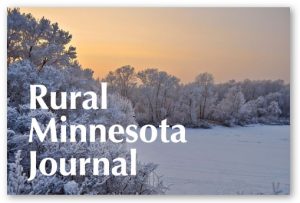Who owns rural Minnesota?
On the surface, this seems like a fairly straightforward question. Farmers. Businesses. Some people who live in towns. The state owns a lot of parks, and the counties do, too.
But scratch the surface, and it turns out the answer is more complicated. Yes, farmers and people in towns and some companies and state and local government do own most of the land in rural Minnesota, just as they do in urban and suburban Minnesota. But when it comes to property ownership in Greater Minnesota, there’s a lot more going on.
In the last issue of the Rural Minnesota Journal, our authors took a look at who lives in rural Minnesota. They showed us that the region is anything but homogeneous, with far more issues to talk about than most people realize.
This year we wanted to pose the next logical question, that of ownership. It’s an intriguing idea. Try digging into the concept of ownership and you’ll come up with myriad commentaries and legal theories based on the debates of philosophers in the 17th and 18th centuries. What is the best kind of ownership? Should a free society have private property? Should it have nothing but private property? The arguments of the day came down on all sides in a time when society was trying to figure out how to manage property now that the aristocracy didn’t own everything anymore.
Today, in the United States, we assume we understand what ownership means and that it’s pretty straightforward and uniformly accepted. We own a piece of land, a house, a car, and we use them as we see fit, within the limits of the law.
But there’s the rub. How much do you really own something when someone else can tell you what to do with it?
Ownership is an especially pertinent topic in Greater Minnesota. In a region blessed with abundant natural resources and where a good portion of the economy depends on their extraction, ownership can mean a number of different things. For this first issue of 2014, we’ll be looking at two important uses of land, forestry and mining, discussing the various aspects of ownership, use, and law for those who live here and those who make their living here. The implications are big and complex.
And in an important change from past Journals, we’ll be publishing quarterly and online. So we’ll spend the rest of this year looking at a number questions about ownership, especially the ones that affect Greater Minnesota. For example, what happens to the intellectual property developed in this state and who profits from it, especially the intellectual property developed for agriculture and the natural resources industries? Wind generators are another good topic of conversation when it comes to land use or access to it. And what happens to ownership when farm parents pass away and the title to their land passes to children who don’t live in the region? Is there an impact on the rural economy if the children choose to sell? And ownership in Indian land is a system not well understood by people on the outside.
Since the Journal was first started in 2006, we have worked to inspire much-needed conversations on everything from education to healthcare to broadband, and we plan to continue to do so. This issue marks the first of our all-online publication of the Rural Minnesota Journal. Instead of one print issue coming out at the end of the year, we will be coming out quarterly with two or three articles written on topics that we hope you’ll find as interesting as we do. By going online, we want to take the discussion to an even wider audience and welcome more voices into the conversation.
Watch for follow-up articles in April, July, and October, when RMJ will continue to examine the many different angles of the question, “Who owns rural Minnesota?”
— Marnie Werner, editor
The Rural Minnesota Journal Editorial Committee
Jean Burkhardt
Welcome, MN
Richard Davenport
Minnesota State University, Mankato
Bob Franklin
Maple Plain, MN
Tim Houle
Crow Wing County Administrator
Sandy Layman
Layman Consulting
Wy Spano
University of Minnesota, Duluth
Tom Stinson
University of Minnesota

